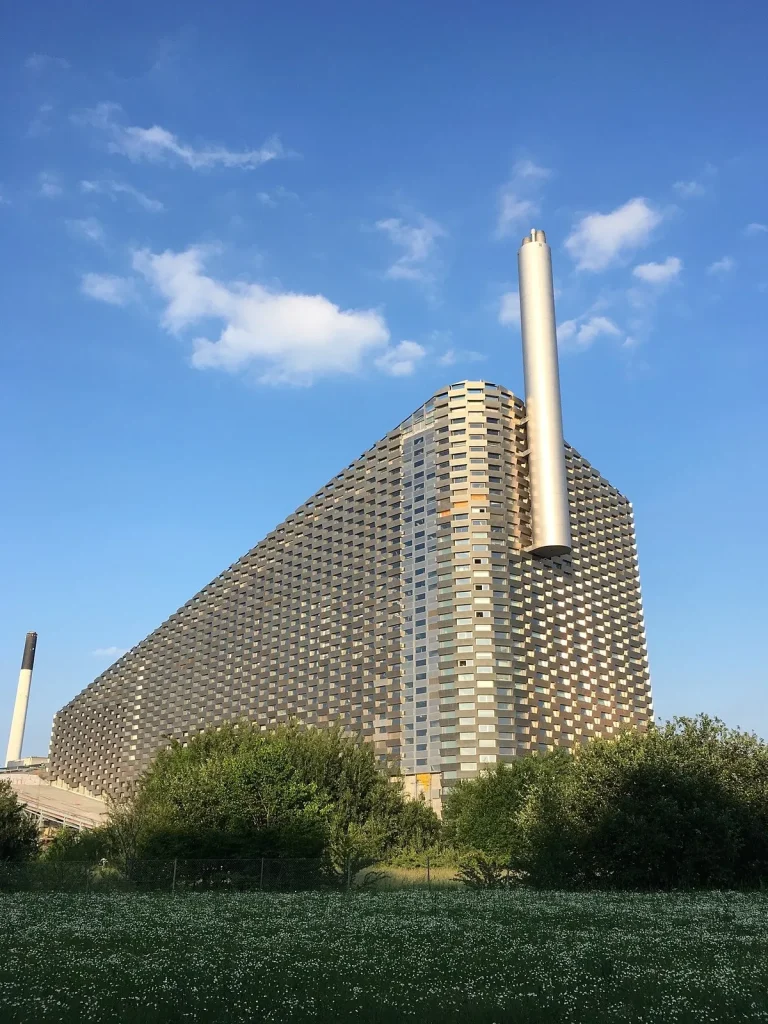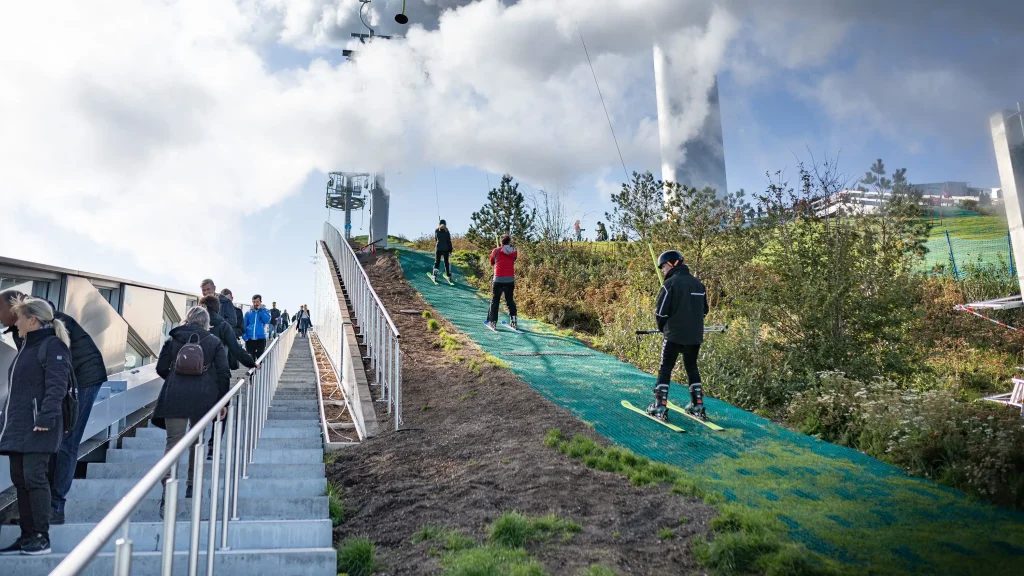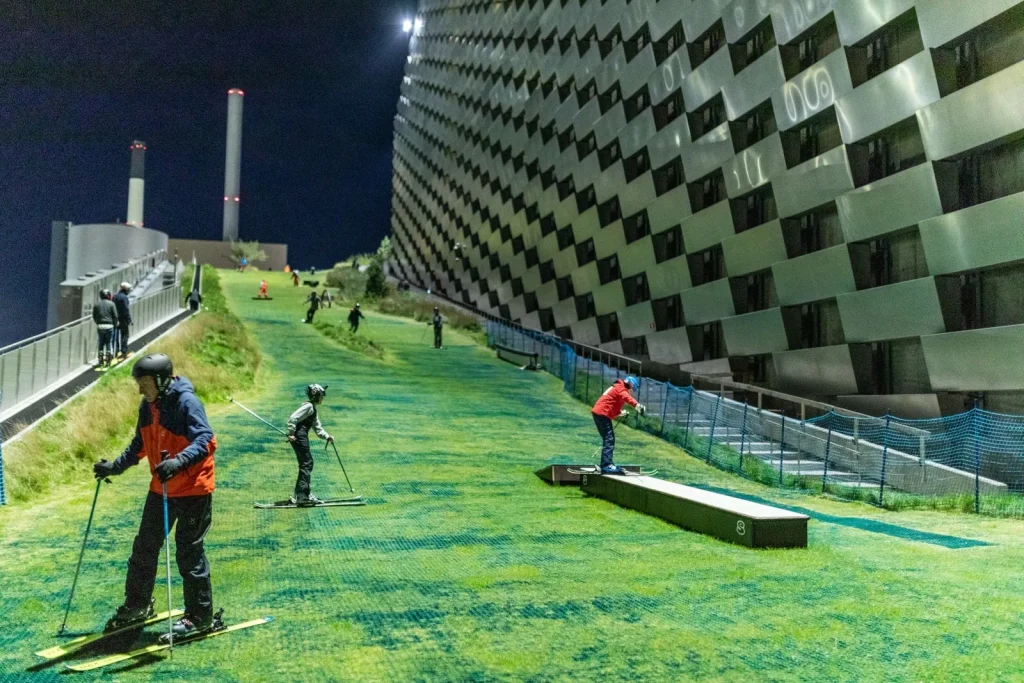Denmark has set a global benchmark with its innovative waste-to-energy power plant, CopenHill, also known as Amager Bakke. Completed in 2017, this facility is recognized as the cleanest waste-to-energy plant in the world, and it features an extraordinary design that doubles as a public recreational space.

A Fusion of Waste Management and Public Recreation
Designed by BIG (Bjarke Ingels Group), CopenHill is located on an industrial waterfront and transforms 440,000 tons of waste annually into clean energy. The building is not just a power plant but a multifunctional public space. Its roof hosts a 400-metre-long ski slope, the tallest artificial climbing wall globally, and tree-lined hiking trails. The rooftop ski slope includes a 180-degree turn and is accessible via platter lifts, carpet lifts, and a glass elevator that provides views into the plant. Additionally, the building features a crossfit area, a rooftop bar, and a 490-metre-long hiking trail within a “lush” garden designed by SLA Architects.

Cutting-Edge Technology and Design
CopenHill’s design is as functional as it is striking. The building’s wedge-shaped form and sloped green roof are complemented by its facade, which consists of 1.2-meter-tall and 3.3-meter-wide aluminium bricks. Inside, the facility employs advanced waste treatment and energy production technologies. Waste is incinerated at high temperatures, with the energy produced used for electricity and district heating for 72,000 homes. The plant’s advanced filters and Selective Catalytic Reduction technology ensure that emissions are minimal, making it one of the cleanest facilities of its kind.

A Sustainable Urban Model
CopenHill demonstrates how infrastructure can merge sustainability with public enjoyment. Its integration of recreational features into an industrial facility challenges the traditional notion of power plants as purely functional and aesthetically unappealing. The building’s design serves as a model for how cities worldwide can approach waste management and energy production with an emphasis on environmental responsibility and public engagement.

A Blueprint for Global Adoption
Denmark’s innovative approach provides valuable insights for other countries. By incorporating public amenities into critical infrastructure, CopenHill illustrates how sustainable practices can enhance urban living. As cities around the world strive for greener solutions, adopting similar models could significantly impact how industrial infrastructure is perceived and utilised.

CopenHill is a testament to the transformative power of architecture and sustainability, offering a vision of how future urban spaces might blend function, technology, and public enjoyment.
